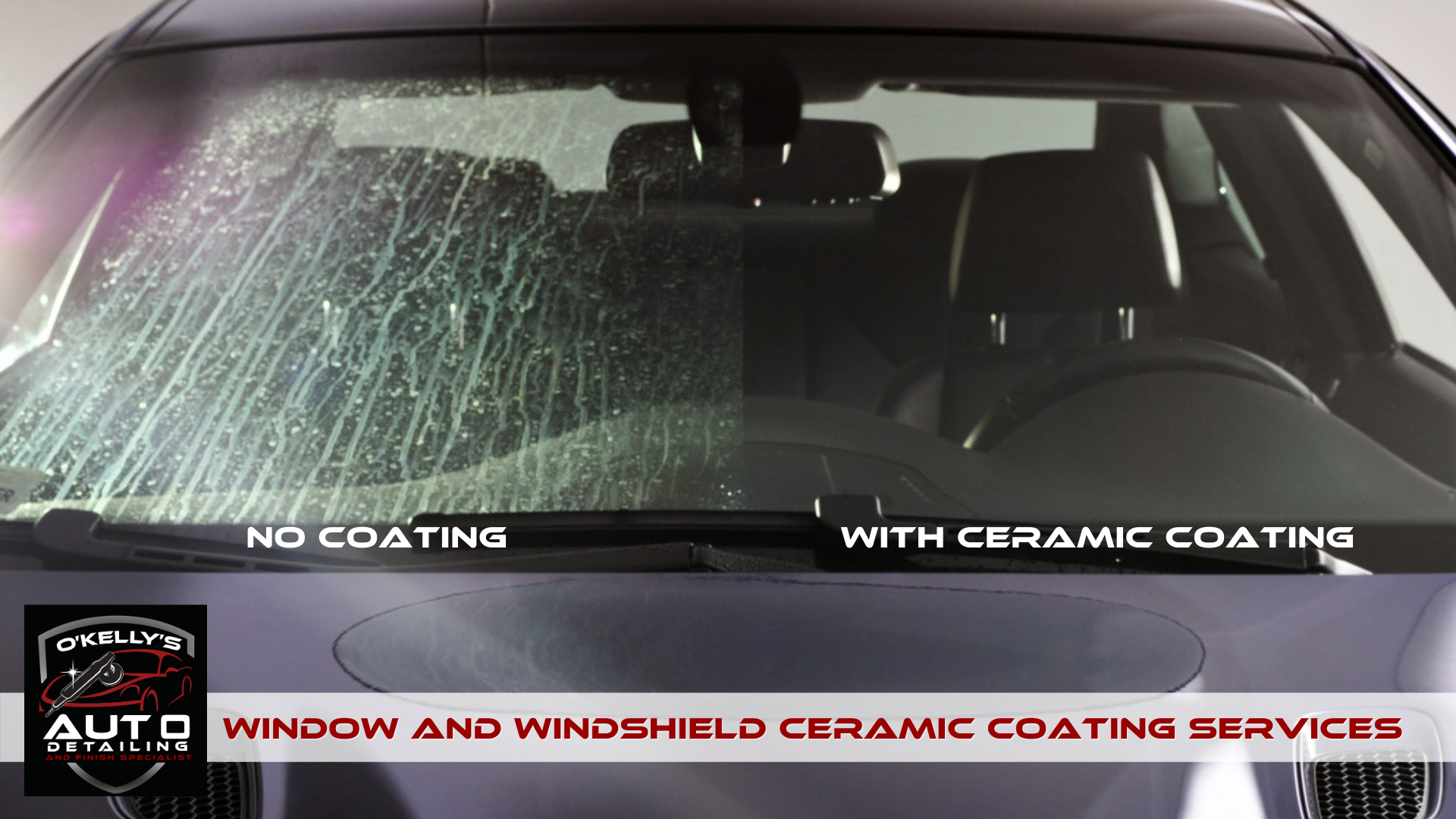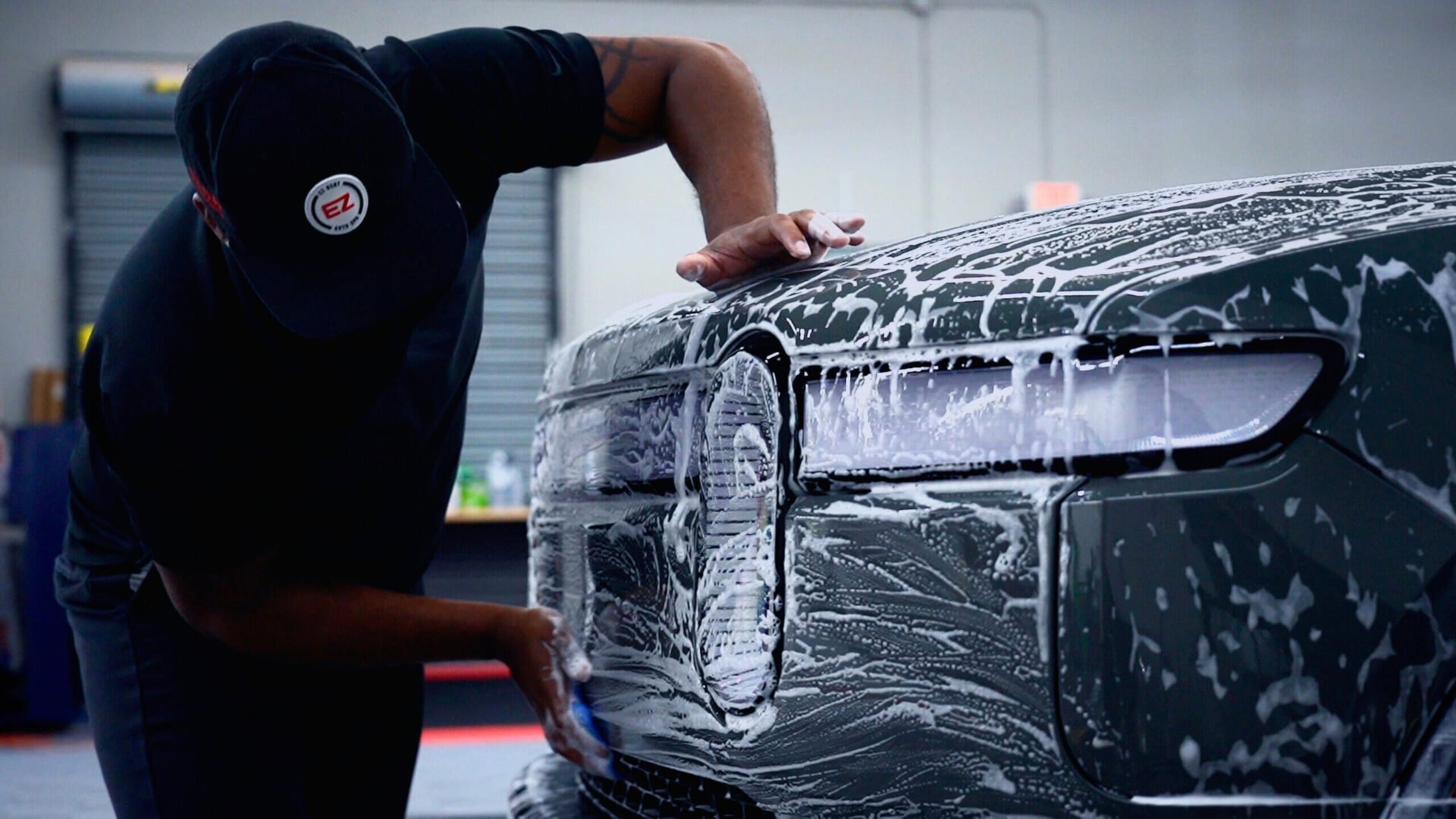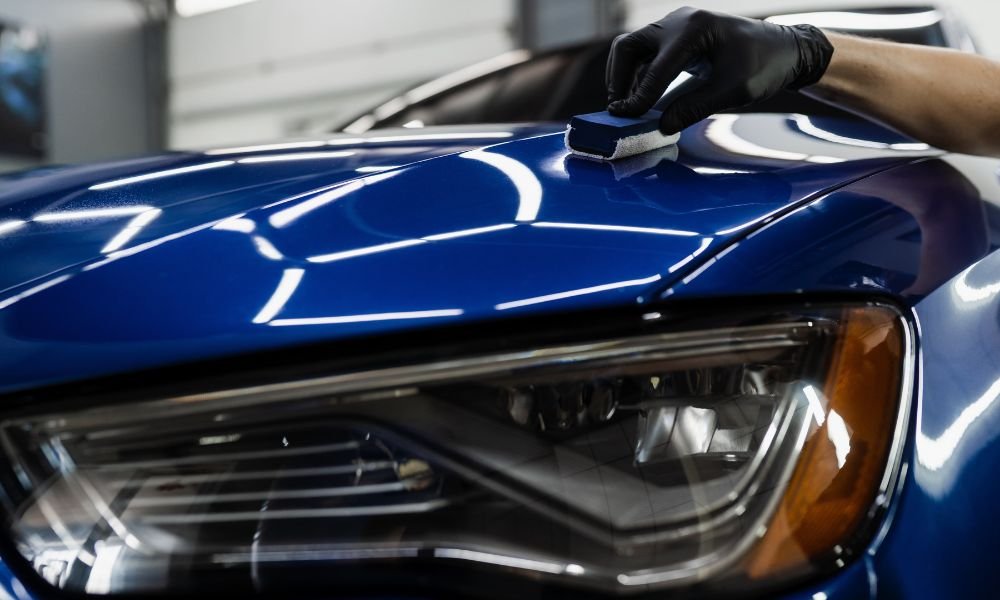Ceramic Coating vs. Typical Wax: Which is Right for Your Vehicle?
Ceramic Coating vs. Typical Wax: Which is Right for Your Vehicle?
Blog Article
The Function of Ceramic Covering in Safeguarding Your Automobile's Paint From Environmental Damages
Ceramic layer has become a sophisticated solution for automobile proprietors looking for to preserve the stability of their lorry's outside. By developing a robust chemical bond with the paint, this innovative innovation uses a powerful obstacle versus various ecological risks, such as UV rays, acid rainfall, and pollutants. Recognizing the thorough advantages and the intricacies of the application procedure is important for maximizing its effectiveness. As we check out the nuances of ceramic finishing, it becomes apparent that the choice to execute this protective procedure might considerably affect your automobile's longevity and visual.
What Is Ceramic Covering?
Ceramic finishing is an advanced fluid polymer applied to the exterior surface areas of a vehicle, made to supply a long lasting layer of defense for the paint. This ingenious solution develops a chemical bond with the automobile's manufacturing facility paint, developing a hydrophobic and resistant guard. The finish contains nanoparticles that complete the tiny blemishes in the paint, leading to a smooth surface area that enhances gloss and radiate.
Typically, ceramic coverings are offered in different formulations, allowing for different degrees of protection and durability. While some products can last for numerous months, others offer protection for several years, relying on the density of the application and environmental aspects. The application process requires thorough prep work, including washing, sanitizing, and polishing the car's surface area to ensure optimal adhesion of the coating.

Benefits of Ceramic Finish
One of the primary benefits of using a ceramic covering is the outstanding security it uses to automotive paint. This advanced covering develops a resilient layer that guards the car's surface from a range of environmental risks, including UV rays, acid rainfall, bird droppings, and tree sap. By supplying this robust defense, ceramic finishes considerably lower the risk of fading and etching, preserving the vehicle's aesthetic charm gradually.
Along with protection, ceramic coatings are renowned for their hydrophobic homes, which repel water and dirt, making it simpler to maintain a tidy vehicle. This self-cleaning effect decreases the frequency of cleaning, saving both time and resources. Ceramic coverings boost the depth of the paint's gloss, resulting in a polished and vibrant look that elevates the general look of the vehicle.
One more noteworthy advantage is the longevity of ceramic finishings. Unlike traditional waxes or sealants that call for constant reapplication, ceramic finishings can last numerous years, offering an economical service for cars and truck proprietors seeking lasting defense. On the whole, purchasing ceramic finish causes boosted toughness, lowered upkeep, and continual aesthetic appeal for automotive paint.
Exactly How Ceramic Layer Works
A ceramic finish operates via a chemical bonding procedure that develops a safety layer on the automobile's paint surface. This innovative service makes use of innovative nanotechnology, where tiny particles of silica are put on hold in a fluid kind - ceramic coating. Upon application, these bits bond with the manufacturing facility paint, forming a long lasting and hydrophobic layer that enhances the car's surface area
The main component of ceramic finishes, silicon dioxide (SiO2), adds to the finish's toughness and strength. When healed, the coating changes into a difficult, glass-like surface that shields the paint from ecological pollutants such as dust, UV rays, bird droppings, and tree sap. This molecular bond causes a surface that is not just immune to scrapes but additionally less complicated to clean up, as dirt and gunk are much less likely to stick.
Additionally, the hydrophobic residential properties of ceramic finishes cause water to bead and slide off, minimizing the opportunities of water spots and natural resource. This safety obstacle successfully prolongs the life of the paint and keeps the check my source lorry's aesthetic allure, providing cars and truck owners a resilient option for paint security.
Application Process of Ceramic Coating
When considering the application of ceramic finishing, prep work is essential to achieving optimum outcomes. The initial step entails thoroughly washing the automobile to eliminate dust, grime, and read contaminants from the surface area. This commonly includes a purification procedure making use of clay bars or chemical cleansers to make sure the paint is perfectly clean. Any kind of scrapes or flaws ought to be dealt with at this phase, as the coating will certainly bond with the surface area beneath.

Ceramic coating is then applied in small sections, normally utilizing an applicator pad. It is essential to operate in also strokes, making certain consistent protection. The finishing ought to be allowed to heal for a defined time, which can differ depending upon the item utilized. After the first application, a top notch microfiber towel is made use of to buff the surface area, improving gloss and guaranteeing a smooth finish. The vehicle needs to be left to cure in a regulated setting to enable the coating to fully bond with the paint.
Long-Term Upkeep and Care
Achieving a successful ceramic covering application sets the foundation for long-lasting defense, yet appropriate maintenance is important to maintaining its benefits. Routine cleaning is essential; utilizing a pH-neutral automobile shampoo will certainly assist preserve the finishing's integrity without creating damage. Prevent automated auto washes that use rough products, as they can compromise the finishing's surface area.

In addition, applying a ceramic finishing upkeep spray can improve the existing layer, providing an additional increase in protection and luster. It's suggested to do this every three to six months, depending on environmental exposure.
Last but not least, auto parking in shaded areas or making use of car covers can stop prolonged direct exposure to dangerous UV rays and ecological impurities, better prolonging the life of your ceramic covering. By adhering to these maintenance methods, you can ensure your automobile's surface stays safeguarded and visually appealing for several years ahead.
Conclusion
In recap, ceramic covering functions as an essential protective measure for vehicle paint, successfully protecting vehicles from a variety of ecological dangers. Its capacity to produce a robust hydrophobic obstacle not just boosts visual allure but additionally dramatically reduces the regularity and intensity of upkeep called for. The long-lasting nature of this innovative polymer underscores its value in protecting automobile honesty and appearance, eventually adding to a more sturdy and aesthetically attractive vehicle finish.
Ceramic layer is a sophisticated fluid polymer used to the external surfaces of an automobile, made to supply a durable layer of protection for the paint. Ceramic coatings boost the depth of the paint's gloss, resulting in a polished and vivid appearance that elevates the general appearance of the car.
A ceramic coating operates through a chemical bonding procedure that creates a safety layer on the automobile's paint surface area.The primary part of ceramic coverings, silicon dioxide (SiO2), contributes to the coating's stamina and resilience.In recap, ceramic coating serves as a crucial safety step for auto paint, successfully shielding vehicles from a range of ecological hazards.
Report this page